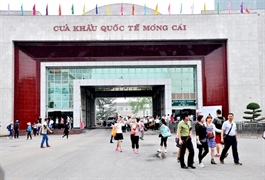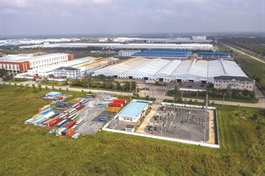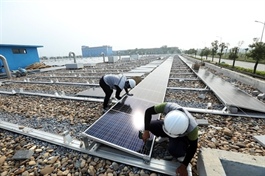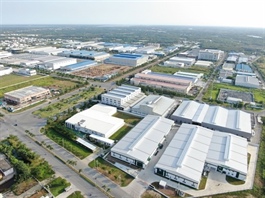Ministry projects three economic growth scenarios for 2024, highest at 6.5 per cent
Ministry projects three economic growth scenarios for 2024, highest at 6.5 per cent
The Ministry of Planning and Investment has outlined three potential economic growth trajectories for 2024, with the peak GDP growth rate forecast at 6.5 per cent.
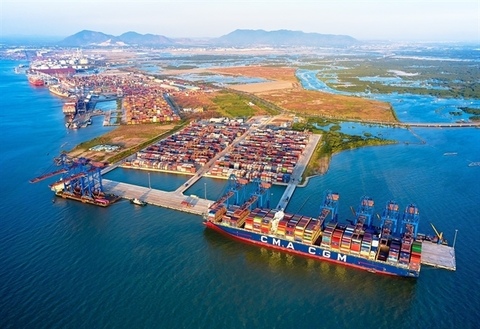
Gemalink Deep-Sea Port in Bà Rịa - Vũng Tàu Province. 2024 was expected to be a breakthrough year for Vietnamese economy to reach the goals of the five-year plan. — VNA/VNS Photo Hồng Đạt |
These projections stem from the Government's socio-economic development strategy for the 2021-25 period, combined with endeavours to meet the 2023 growth goal of 6.5 per cent.
Given the challenges faced by the Vietnamese economy between 2021-23, 2024 is anticipated to be a pivotal year for Việt Nam to accomplish the objectives of its five-year plan.
In the first scenario, Việt Nam's GDP is predicted to rise by 6 per cent. This estimate presumes that global growth will be moderate in 2023 and the resurgence of global trade and investment will continue to face hurdles. Although the domestic market and services sector might exhibit robust growth, the import, export, and industrial production sectors may not experience a marked recovery due to their reliance on global market demand.
The Ministry of Planning and Investment believes a GDP growth target of 6 per cent would be fitting, given the expected continued risks the global and domestic economies may encounter during the recovery phase.
Under the second scenario, the ministry envisages a GDP growth of 6.5 per cent, assuming that both the global and regional economies rebound quicker than international organisations' predictions. This scenario also considers a surge in demand, trade, and investment. Concurrently, the domestic market would likely experience revivals in demand, production, business activities, exports, investment, and FDI influx.
For the third scenario, the GDP growth is projected to range between 6 - 6.5 per cent, reflecting predictions of swift changes in both global and domestic contexts. The Ministry of Planning and Investment favours this third scenario.
While optimism regarding economic recovery is on the rise, various organisations and specialists remain wary about the prospects for Việt Nam's economy.
In mid-July, the Asian Development Bank adjusted its 2023 forecast for the Vietnamese economy downwards from 6.5 per cent to 5.8 per cent and its 2024 projection from 6.8 per cent to 6.2 per cent.
Similarly, in early April, the World Bank anticipated a moderate 4.7 per cent growth for Việt Nam in 2023, progressively increasing to 5.5 per cent in 2024 and reaching 6 per cent by 2025.
The World Bank’s report pointed out that a proactive fiscal policy supporting short-term demand, removing barriers to the implementation of public investment and addressing infrastructure constrains could help the economy achieve these targets and prolong long-term growth.
Expert Cấn Văn Lực forecasts Việt Nam’s GDP growth rate at 6 per cent in 2024 and 6.5 per cent in 2025.
The growth rates could be higher if Việt Nam managed to consolidate existing growth drivers and exploit new drivers which would come from promoting digital economy, improving labour productivity, the private sector, the institutional improvements and the development of green economy.
According to Chairman of the National Assembly’s Economic Committee Vũ Hồng Thanh, Vietnamese economy’s recovery depended significantly on the global trend and solutions to tackle internal problems.
The pressure on macro-economic management, inflation control and growth promotion would increase in the remaining months of this year, requiring hastened effort to achieve the target set at 6.5 per cent and implement the plan for 2021-25 period, Thanh said.
Thanh added that the focus in the remaining months of this year would be to speed up public investment disbursement, increase domestic demand and accelerate production and business, especially in major cities such as Hà Nội, HCM City, Bắc Ninh, Bình Dương and Đồng Nai.
It was also important to remove bottlenecks in policies and mechanism to improve the investment climate, he stressed.



